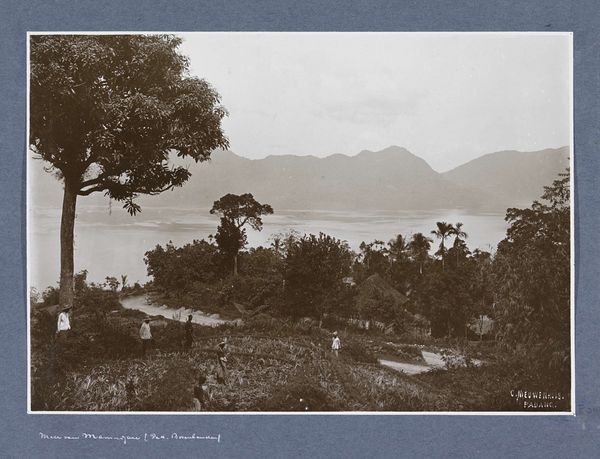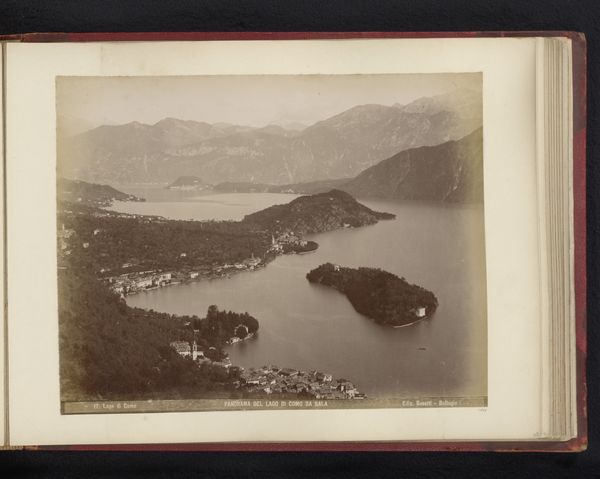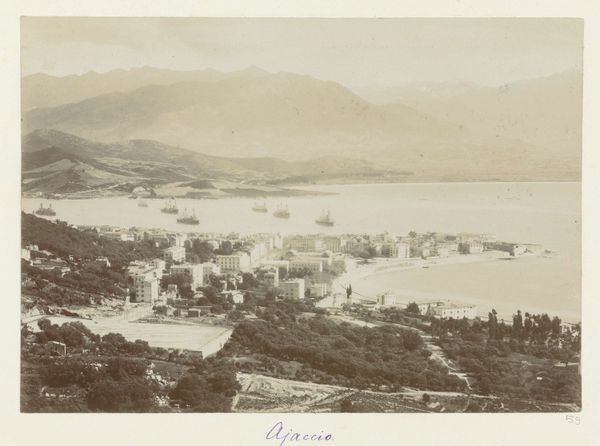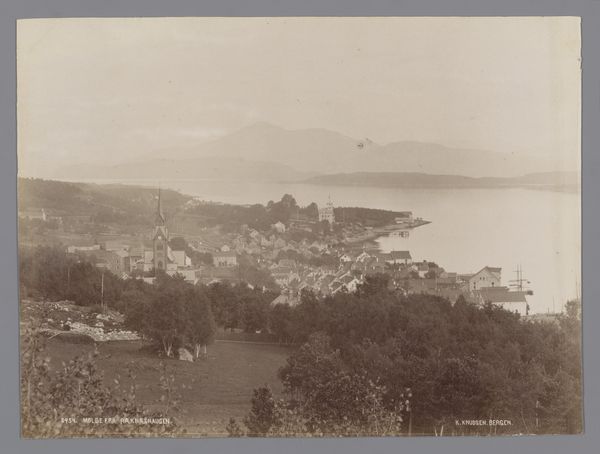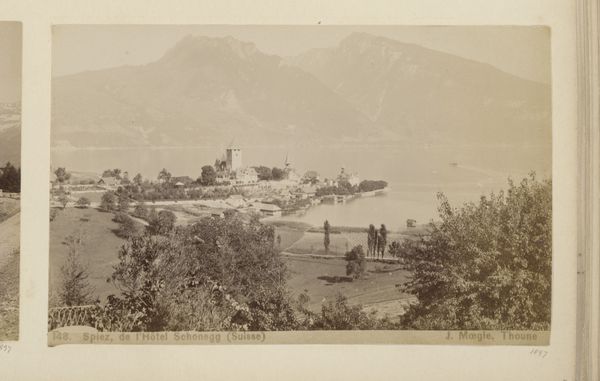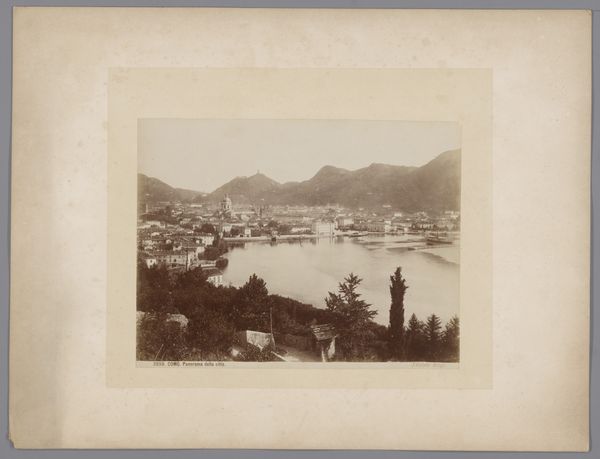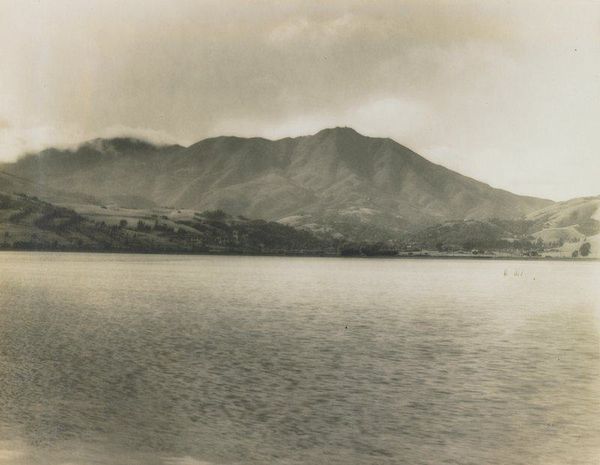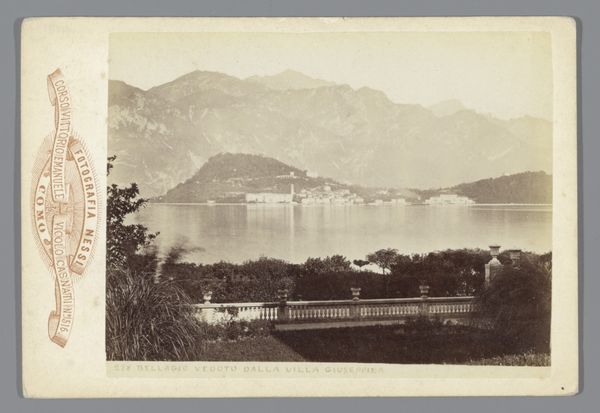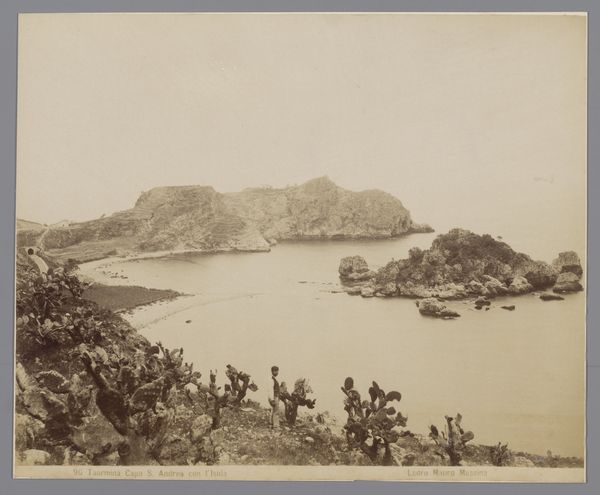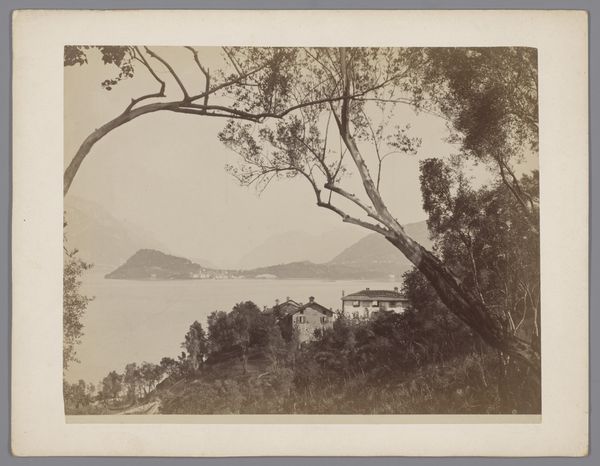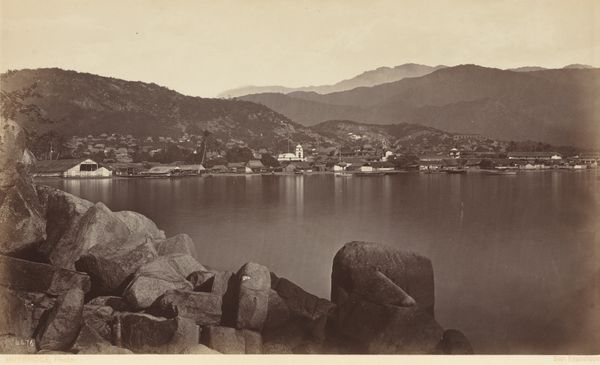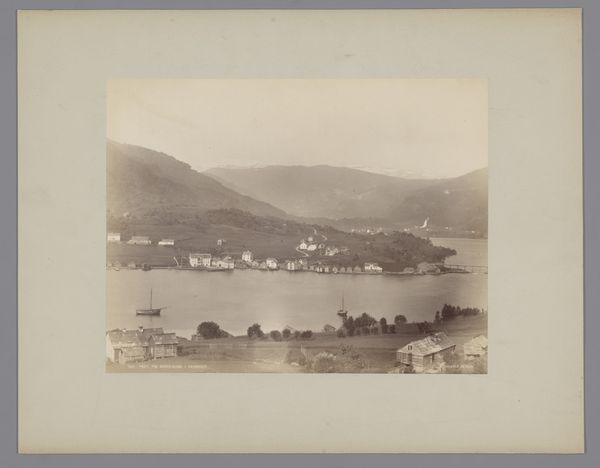
photography
#
pictorialism
#
landscape
#
photography
Dimensions: height 230 mm, width 272 mm
Copyright: Rijks Museum: Open Domain
Curator: Welcome. Today, we’re exploring "Drie eilanden in het Lago Maggiore, Italië," or “Three Islands in Lake Maggiore, Italy,” a landscape photograph created circa 1890-1925 by Photoglob & Co. Editor: My first impression is one of serenity. The muted tones, the horizontal composition, it all lends itself to a feeling of peaceful stillness. There's something melancholic about the tones too. Curator: Absolutely. And thinking about its historical context, the Pictorialist style evident here represented a deliberate artistic movement away from photography as purely documentary. Editor: Indeed, you can clearly see the careful manipulation of light and focus in this photographic print to evoke a specific aesthetic and elicit emotional impact. The photographer is not merely recording a scene, but actively constructing a visual experience, guiding the viewer's eye through carefully arranged tonal gradations. Curator: And Lake Maggiore itself has a long history of attracting artists and writers, offering a retreat from urban life and industrialization. The islands visible in the photograph, Isole Borromee, were notably developed by the Borromeo family beginning in the 16th century, as emblems of their power and status. This piece can also be understood as situating itself within the established traditions of representing picturesque landscapes in Italy. The absence of human figures suggests perhaps a vision of untouched, timeless beauty. Editor: That's insightful. Considering the photographic process, there’s an undeniable element of control through selective focus to amplify the emotional aspect of the work, creating layers through a hierarchy of clarity within the image itself. Note how the forms of the plants in the foreground play off of those islands in the mid-ground, creating a visual echo of sorts, connecting nature and humanity. Curator: Thinking about it now, in its depiction of a harmonious relationship between humanity and nature, this work may offer a romanticized vision of place. It’s interesting how those historical constructions and societal structures ultimately shaped the photographer’s very framing of the land itself. Editor: Ultimately, that subtle dance of dark and light and considered arrangement underscores what makes photography at this point so endlessly alluring. Curator: Indeed. Hopefully this gives a different insight when viewing the work. Editor: Agreed. Thanks for your insights.
Comments
No comments
Be the first to comment and join the conversation on the ultimate creative platform.
